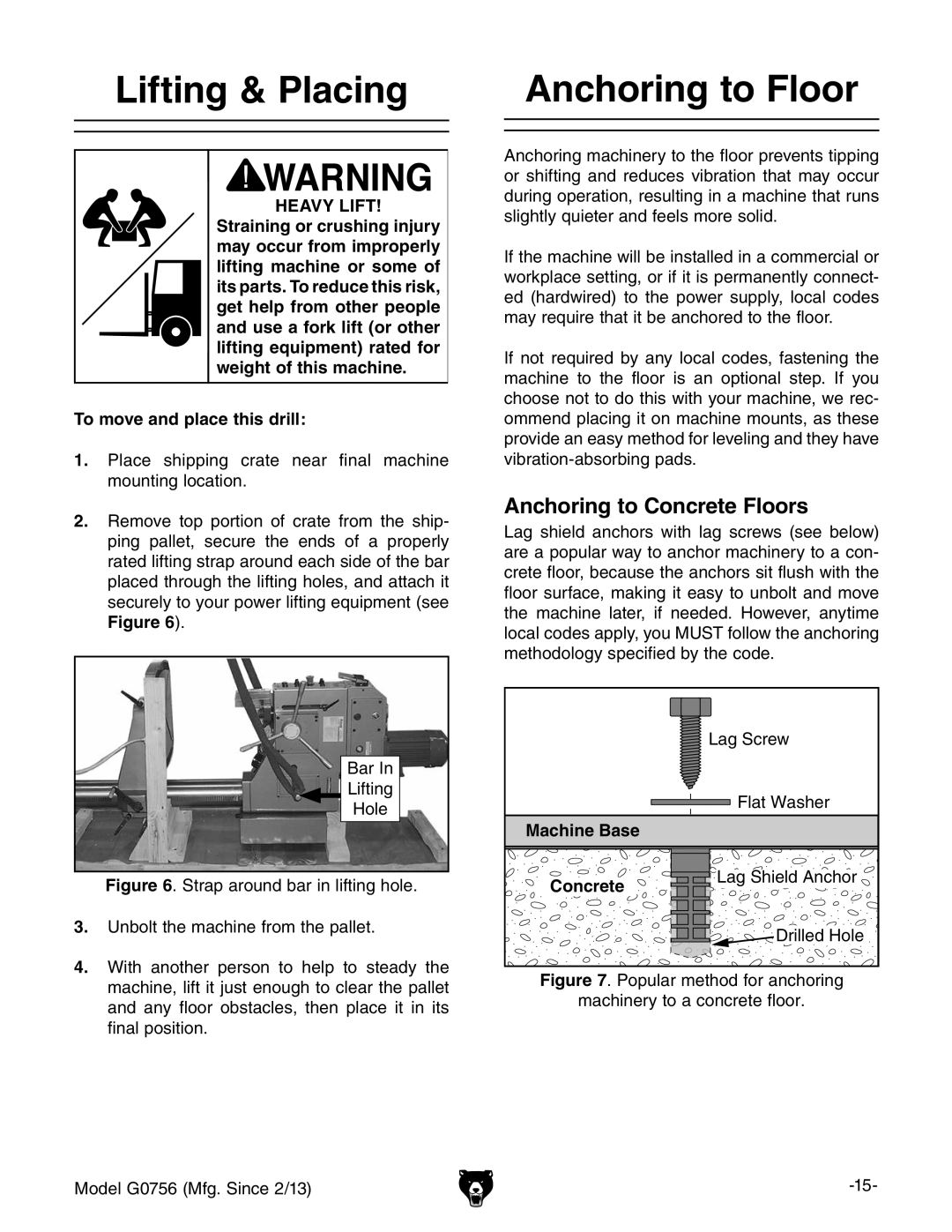
Lifting & Placing
hEAvy LIfT!
Straining or crushing injury may occur from improperly lifting machine or some of its parts. To reduce this risk, get help from other people and use a fork lift (or other lifting equipment) rated for weight of this machine.
To move and place this drill:
1.Place shipping crate near final machine mounting location.
2.Remove top portion of crate from the ship- ping pallet, secure the ends of a properly rated lifting strap around each side of the bar placed through the lifting holes, and attach it securely to your power lifting equipment (see Figure 6).
Bar In
Lifting
Hole
Figure 6. Strap around bar in lifting hole.
3.Unbolt the machine from the pallet.
4.With another person to help to steady the machine, lift it just enough to clear the pallet and any floor obstacles, then place it in its final position.
Model G0756 (Mfg. Since 2/13)
Anchoring to Floor
Anchoring machinery to the floor prevents tipping or shifting and reduces vibration that may occur during operation, resulting in a machine that runs slightly quieter and feels more solid.
if the machine will be installed in a commercial or workplace setting, or if it is permanently connect- ed (hardwired) to the power supply, local codes may require that it be anchored to the floor.
if not required by any local codes, fastening the machine to the floor is an optional step. if you choose not to do this with your machine, we rec- ommend placing it on machine mounts, as these provide an easy method for leveling and they have
Anchoring to Concrete Floors
lag shield anchors with lag screws (see below) are a popular way to anchor machinery to a con- crete floor, because the anchors sit flush with the floor surface, making it easy to unbolt and move the machine later, if needed. however, anytime local codes apply, you Must follow the anchoring methodology specified by the code.
| Lag Screw |
| Flat Washer |
Machine Base |
|
Concrete | Lag Shield Anchor |
| |
| Drilled Hole |
